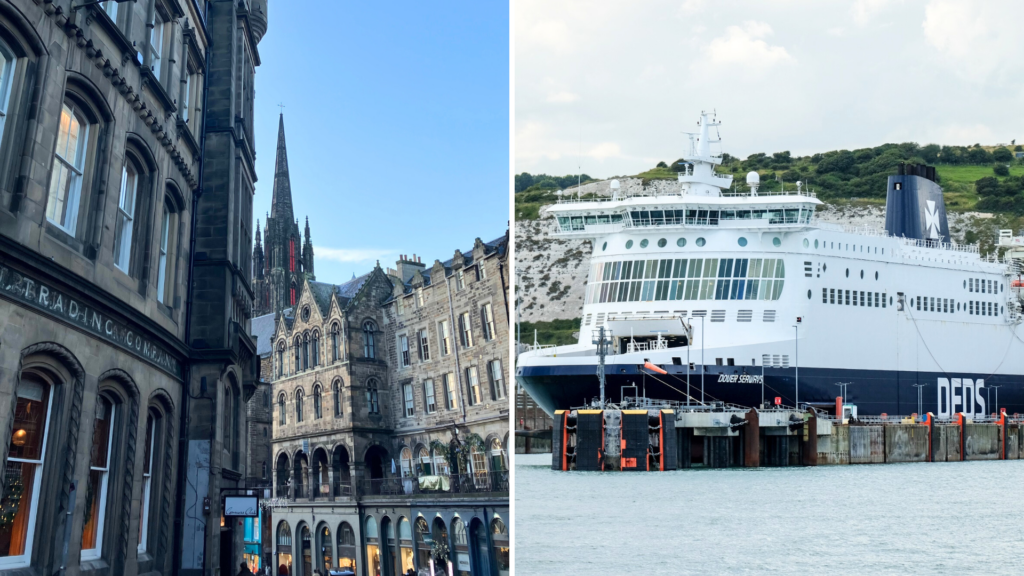Plans to reinstate a combined passenger and freight ferry between Belgium and Scotland have been set back due to a combination of factors, from high costs to low demand.
Between 2002 and 2010, people could hop on a ferry at Zeebrugge and get off in Rosyth, a 40-minute drive from Scotland's capital Edinburgh. However, this service – the only direct passenger ferry route between Scotland and Continental Europe – was replaced by a freight-only service operated by Danish shipping company DFDS. This was terminated in 2018 following a ship fire, marking an end to all ferry traffic between the two countries.
However, in 2022, plans were unveiled to reinstate the ROPAX – a roll-on/roll-off vessel built for freight vehicle transport along with passenger accommodation. DFDS was evaluating the ferry link between the Port of Antwerp Bruges (the merged ports of Antwerp and Zeebrugge) and Rosyth, with three round trips per week, and each leg taking around 20 hours.
The first ships were expected to set sail around April 2023. However, almost 1.5 years later, the service between Zeebrugge and Scotland has not materialised. "Despite several attempts by the port authority, it proved impossible to make the service viable," Bruges Mayor Dirk De fauw told The Brussels Times.
Costs and practicalities
There are several obstacles to reintroducing the service, such as the mandatory introduction of the European Entry/Exit System – an automated IT system for registering passengers from non-EU countries (including the United Kingdom since Brexit) who travel to the EU.
"This obligation requires new investment in security equipment, among other things," De fauw said. "The necessary adjustments to the infrastructure (i.e. quays, berths, reception facilities) are immense and cost a huge amount of money."

Passengers would have got off the ferry around 25 km from Edinburgh. Credit: Pixabay
Former MP for the constituency that includes Rosyth, Douglas Chapman, warned last year that the "main barriers" the project faced were issues around border force and control. He called for help from the UK Government to alleviate these costs, seemingly to no avail. This would prevent the crossing from being competitive in price, for freight or passengers.
De fauw added that there are other practical barriers, as the schedule plans for arrival at 17:00 and departure between 21:00 and 22:00 in Zeebrugge. "This makes it difficult for supporting services such as Customs, Federal Agency for the Safety of the Food Chain (FAVV) and the Maritime Police to guarantee available personnel (after 'office hours')."
Issues on both ends
Demand for such a service is also lacking, at least among Zeebrugge logistics companies. They expressed interest in a cargo service to Scotland, as the transport cost per unit of cargo on a ROPAX vessel is much more expensive. De fauw added that the port community wants to steer clear from a subsidised shortsea service as, "once the financial injections stop, the chances of the service continuing are very slim."
On the Scottish side, too, there are stumbling blocks, more specifically regarding funding. "We have always made clear our support for the development of Scotland's ports and the potential for new direct freight and passenger ferry services linking Scotland to Europe," a Transport Scotland spokesperson told The Brussels Times. "However, the government cannot subsidise international ferry routes due to UK Subsidy Control rules." These state that such services can only operate on a commercial basis from UK ports to avoid potential litigation.
DFDS has said it is "still looking for opportunities" to link Scotland to Continental Europe. "We have been investigating the possibility of introducing a ferry service between Rosyth in Scotland and Dunkirk in France. The service is still of interest to DFDS, but plans have been put on hold for the time being," a spokesperson said.
For now, the nearest similar ferry is between Newcastle in northern England and IJmuiden in the Netherlands. This route takes around 16 hours.

